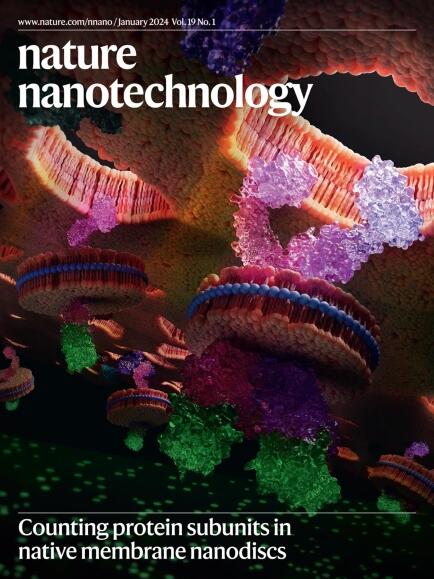可视化细胞糖衣的纳米结构
IF 34.9
1区 材料科学
Q1 MATERIALS SCIENCE, MULTIDISCIPLINARY
引用次数: 0
摘要
糖萼是细胞的糖衣,在免疫学、癌症、病毒感染等方面起着关键作用。在此之前,将其分子结构可视化是不可能的。在这里,我们将代谢标记与ångström-resolution荧光显微镜相结合,以可视化细胞表面聚糖内的单个糖,从而获得糖萼的分子分辨率图像。本文章由计算机程序翻译,如有差异,请以英文原文为准。
Visualizing the nanostructure of the cell’s sugar coat
The glycocalyx, the cell’s sugar coat, has key roles in immunology, cancer, viral infections, and more. Visualizing its molecular architecture was impossible until now. Here, we combine metabolic labelling with ångström-resolution fluorescence microscopy to visualize individual sugars within glycans on the cell surface, thus obtaining molecular-resolution images of the glycocalyx.
求助全文
通过发布文献求助,成功后即可免费获取论文全文。
去求助
来源期刊

Nature nanotechnology
工程技术-材料科学:综合
CiteScore
59.70
自引率
0.80%
发文量
196
审稿时长
4-8 weeks
期刊介绍:
Nature Nanotechnology is a prestigious journal that publishes high-quality papers in various areas of nanoscience and nanotechnology. The journal focuses on the design, characterization, and production of structures, devices, and systems that manipulate and control materials at atomic, molecular, and macromolecular scales. It encompasses both bottom-up and top-down approaches, as well as their combinations.
Furthermore, Nature Nanotechnology fosters the exchange of ideas among researchers from diverse disciplines such as chemistry, physics, material science, biomedical research, engineering, and more. It promotes collaboration at the forefront of this multidisciplinary field. The journal covers a wide range of topics, from fundamental research in physics, chemistry, and biology, including computational work and simulations, to the development of innovative devices and technologies for various industrial sectors such as information technology, medicine, manufacturing, high-performance materials, energy, and environmental technologies. It includes coverage of organic, inorganic, and hybrid materials.
 求助内容:
求助内容: 应助结果提醒方式:
应助结果提醒方式:


